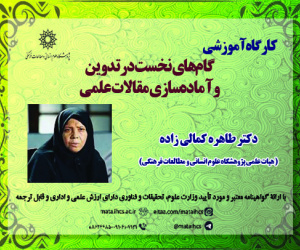رابطه راهبردهای تنظیم هیجانی و احساس امنیت اجتماعی با کیفیت زندگی دانشجویان (مقاله پژوهشی دانشگاه آزاد)
درجه علمی: علمی-پژوهشی (دانشگاه آزاد)
آرشیو
چکیده
هدف از این مطالعه بررسی رابطه راهبردهای تنظیم هیجانی و احساس امنیت اجتماعی با کیفیت زندگی دانشجویان بود. روش پژوهش حاضر توصیفی- از نوع همبستگی بود. جامعه آماری این پژوهش متشکل از کلیه دانشجویان دانشگاه علمی کاربردی شهرستان بجنورد که در سال تحصیلی 98-1397 در مراکز آموزش عالی علمی کاربردی مشغول به تحصیل بودند. از بین این جامعه، نمونه ای به حجم 242 نفر (123 نفر دانشجوی دختر و 119 نفر دانشجوی پسر) با روش نمونه گیری تصادفی طبقه ای انتخاب گردید و با استفاده از ابزارهای: پرسشنامه راهبردهای تنظیم هیجانی گرانسفکی و همکاران (2001) ، پرسشنامه امنیت اجتماعی محقق ساخته و مقیاس کیفیت زندگی ویر و شربون (1992) ، اقدام به جمع آوری اطلاعات شد. برای تجزیه و تحلیل داده ها نیز از میانگین، انحراف استاندارد و جدول توزیع فراوانی برای بررسی شاخص های آمار توصیفی و جهت تحلیل داده ها از آزمون تحلیل رگرسیون و تحلیل واریانس یک راهه برای ارزیابی معناداری ضرایب رگرسیون با استفاده از نرم افزار SPSS استفاد شد. نتایج همبستگی نشان داد متغیرهای راهبردهای تنظیم هیجان و احساس امنیت اجتماعی با کیفیت زندگی رابطه مثبت معنادار دارند. تحلیل رگرسیون نشان داد تنها راهبردهای مثبت می توانند تغییرات مربوط به کیفیت زندگی را با بتای 0.238 تبیین کنند. باتوجه به نتایج پژوهش، هرگونه اقداماتی که در راستای بهبود احساس امنیت اجتماعی و افزایش استفاده راهبردهای مثبت تنظیم هیجانی صورت گیرد، ارتقاء بیشتر کیفیت زندگی را در پی خواهد داشت. واژگان کلیدی: تنظیم هیجانی ، احساس امنیت اجتماعی ،کیفیت زندگی.The relationship between emotional regulation strategies and Sense of Social Security with Quality of Life of Bojnord Students
The Relationship between Emotional Regulation Strategies and Social Security Sense with the Quality of Life among Bojnord University Students ABSTRACT: Background and Aim: The aim of this study was to investigate the relationship between emotional regulation strategies and social security sense with the quality of life among university students. The research method was descriptive-correlational. The statistical population of this study consisted of all students of Applied Science and Technology University of Bojnord city who were students in 2018-2019. Out of this population, 242 students (123 female and 119 male) were selected as target group by stratified random sampling method. The data were collected by using the Gransfeck et al (2001) emotional regulation strategies, researcher-made social security sense questionnaires and the Weir & Sherbun (1992) quality of life scale. For data analysis, the criteria used included the average values, standard deviation, and frequency distribution table by the help of SPSS software in order to analyze descriptive statistics, regression analysis and one-way analysis of variance. Correlation results showed that variables of emotion regulation strategies and sense of social security had a positive significant relationship with the quality of life. Regression analysis showed that only positive strategies could explain the changes in the quality of life with a beta of 0.238. According to the results of the study, any action taken to improve the sense of social security and increase the use of positive emotion regulation strategies will improve the quality of life. Keywords: Emotional Regulation, Sense of Social Security, Quality life.









